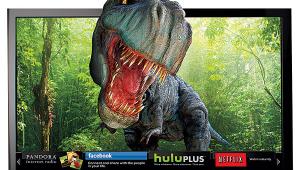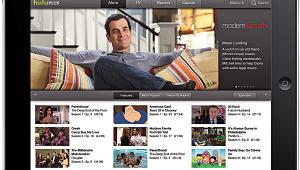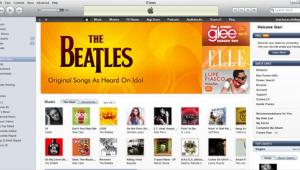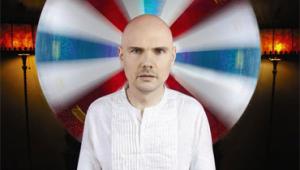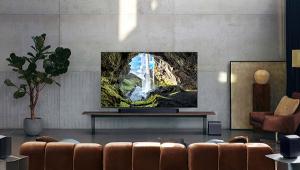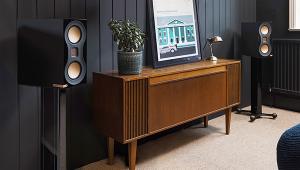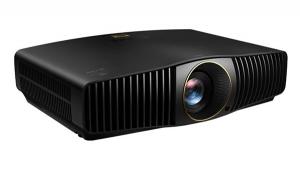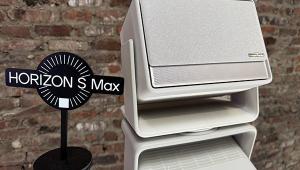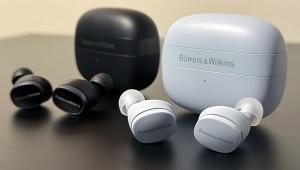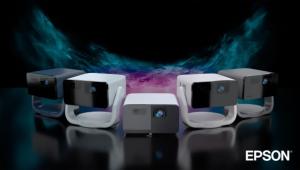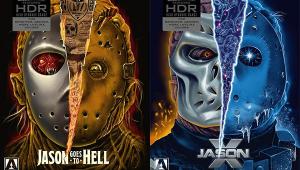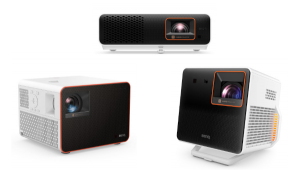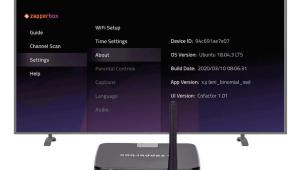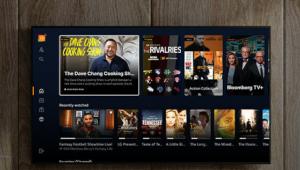Five for Five Page 2
DVD Nothing has had a bigger impact on home theater Illustration by Jayme Thornton  Since the beginning of Sound & Vision, DVD has been the dominant audio/video technology, having a profound impact on practically every aspect of home entertainment over the past five years and making high-quality home theater affordable for the masses. The DVD revolution has driven manufacturers to come up with better video displays and changed forever the way we watch movies at home. Along with reviewing more than 125 DVD players, S&V has covered the emerging DVD culture, not only reporting on attitudes and preferences, but helping to shape them, too.
Since the beginning of Sound & Vision, DVD has been the dominant audio/video technology, having a profound impact on practically every aspect of home entertainment over the past five years and making high-quality home theater affordable for the masses. The DVD revolution has driven manufacturers to come up with better video displays and changed forever the way we watch movies at home. Along with reviewing more than 125 DVD players, S&V has covered the emerging DVD culture, not only reporting on attitudes and preferences, but helping to shape them, too.
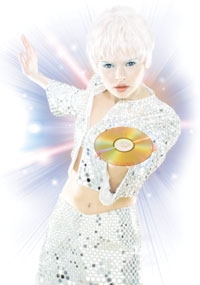 DVD's excellent audio and video have led to some profound attitude shifts. Its picture quality exceeds that of a carefully produced live broadcast, which used to be the standard for home-video quality. Only HDTV can give you a better image than the one you get from a progressive-scan DVD player. And when people realized that DVD images can be enlarged without serious degradation, it suddenly became compelling to watch widescreen movies at home on a large display. This led to an explosion of big-screen TVs - the same kinds of sets we've featured in our test reports since Day One.
DVD's excellent audio and video have led to some profound attitude shifts. Its picture quality exceeds that of a carefully produced live broadcast, which used to be the standard for home-video quality. Only HDTV can give you a better image than the one you get from a progressive-scan DVD player. And when people realized that DVD images can be enlarged without serious degradation, it suddenly became compelling to watch widescreen movies at home on a large display. This led to an explosion of big-screen TVs - the same kinds of sets we've featured in our test reports since Day One.
DVD's high-quality images also created legions of more video-savvy, critical viewers. People you'd never think would be interested in the fine points of video are now concerned about things like the convergence of projector tubes, color accuracy, picture artifacts, plasma display burn-in, and projector-bulb burnout.
This heightened awareness of all things video can also be seen in the enthusiasm for DVD supplements. It used to be hard to imagine average folks watching documentaries on things like the restoration of The Adventures of Robin Hood. But we've now come to expect such "extras" as standard features on a DVD movie. Articles like "DVD's Big Adventure" (February/March 2000) and "Extras! Extras!" (November 2000) helped spread the word about such bonus material.
DVD has also been the biggest influence on home audio gear throughout S&V's existence, mainly because it offers a surround sound experience rivaling that in the best movie theaters. This possibility spurred many people to upgrade to digital surround sound by not only buying center and surround speakers (and, often, a subwoofer), but a digital receiver as well. And as our test reports have shown, these receivers supply an enormous bang for your home-electronics dollar. Thanks to DVD, the victory of surround sound is so complete that two-channel receivers and "plain" CD players have become niche components.
DVD also laid the groundwork for the newerfangled multichannel music formats, DVD-Audio and Super Audio CD. We've offered coverage of both from the start, with comprehensive introductions in February/March and July/August 2001 and reviews of some of the first players. In April 2001, we started a "Tracking Surround" page in the Music section devoted just to new DVD-A and SACD releases.
With my column "Bottomless Pits" (February/March 2001), S&V was the first consumer magazine to point out the importance of bass management for playing DVD-A and SACD releases on a home theater system. While such processing is standard for Dolby Digital and DTS soundtracks, it's still not always available or correctly executed for either high-resolution audio format. It's gratifying to see that this issue has since been taken up by our competitors.
You can thank DVD for transforming the typical home speaker system from a stereo pair to a suite of speakers, including a subwoofer. Before its arrival, subwoofers were used mostly by audio tweaks and bass freaks. Now it's hard to find a surround system that doesn't come with one.
The big thing in DVD right now is recorders - another area that we've covered from the beginning, with the first-ever reviews of models in all three rewritable formats. These machines were all pricey compared with the VHS recorders they're meant to replace, but now you can buy a DVD recorder for less than $500 - a sure sign that VHS is on its way out.
The arrival of decks able to record on more than one type of disc has made things easier for people who are confused and intimidated by the incompatible formats. For instance, Sony's RDR-GX7, reviewed this past October and winner of a Reviewer's Choice Award, can handle both DVD-R/RW and DVD+R/RW discs. And the Toshiba D-R1 recorder reviewed in the February/March 2004 issue can record on DVD-R/RW and DVD-RAM discs. Companies are also becoming more adventurous with their designs, combining DVD and hard-disk recorders in one versatile package.
The next big thing in DVD will be high-definition players and recorders. Unfortunately, these are likely to appear in competing formats. High-def DVD has almost as much potential to transform home entertainment as its standard-definition predecessor - if the perennially paranoid movie studios will release high-def versions of movies on disc.
Before DVD was launched, I attended a press conference where Warner Bros. executives wondered how to create a "collectors' market" for the new medium. Since rentals had always dominated the VHS-movie business, they weren't convinced people would collect DVDs. But they soon discovered that once you produce the first few hundred copies, DVDs are actually cheaper to make than videocassettes. This savings led to many DVDs being sold for less than CDs - and a vast collectors' market was born.
More than half the households in America own at least one DVD player - the fastest adoption of a home-entertainment product ever. This bodes well for the success of high-def DVDs, which could begin to appear late in 2005. Of course, we wouldn't be surprised if the movie industry, fearful of piracy, limited releases to a trickle. But high-def movies eat up so much data that HD-DVDs would be very difficult to copy. That means nobody's going to have to worry about high-def file swapping anytime soon. So bring it on: blue lasers, camera, action!
- Log in or register to post comments






